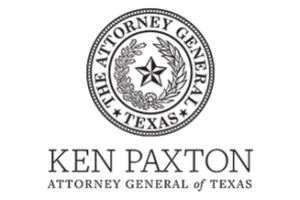BY KENRIC WARD & JON CASSIDY Watchdog.org
From Baytown to the Ysleta Independent School District, Texas taxpayers are being asked to shoulder $8.8 billion in new debt this fall. Eighty-nine proposed bond issues would add to the $322 billion in outstanding debt currently carried by schools, cities, counties and special taxing districts around Texas. Do voters know on what they’re actually voting? Not really. Low turnout and selectively low information give an edge to special-interest groups with skin in the game. Though public agencies are prohibited from directly campaigning for bond referendums, architects, contractors and various vendors vigorously pitch multimilliondollar projects without restrictions.
“An architect can make millions and fund a foundation to advertise,” observes state Sen. Kelly Hancock, R-North Richland Hills. In Dallas, the Regional Chamber of Commerce and the Dallas Citizens Council are raising $300,000 to promote a $1.6 billion school bond. “Our goal is 100 percent participation by a caring business community. We need help to win it for our children!” an internal email states. But the pro-bond campaign contains no mention of the $4.3 billion in debt already carried by the Dallas Independent School District. Nor is there any reference to the fact DISD is sitting on $187.7 million in reserves.
Nowhere is it noted DISD is actually shrinking. The district had a student enrollment of 159,487 in 2014, down from 160,318 a decade ago. A lack of objective data is compounded by low-turnout, off-year elections, where, typically, just 10 percent of registered voters cast ballots. “I’d like to see higher voter turnout when you’re putting every citizen in debt,” Hancock said. ‘TICKING TIME BOMBS OF DEBT’ Rep. Matt Shaheen, R-Plano, decries “record-setting local debt.” He introduced House Bill 1750 to ban the use of capital appreciation bonds, which carry balloon payments. “These are ticking time bombs of debt. Reliance on them can contribute to greater expense to the taxpayer because interest is accrued and can result in disaster if local governments fail to properly budget for the eventual end payment,” Shaheen said.
Yet House Bill 1750 failed, so local governments can continue to float capital appreciation bonds, even without voter approval. The 2013 Legislature killed a bill that would have prohibited entities that benefit from bond proceeds from campaigning for passage. The 2015 session did shine a light on accounting. House Bill 1378 required disclosure of the combined principal and interest required to pay all outstanding debt obligations on time and in full. Government agencies also must provide a per-capita breakdown on all bond costs. But the law does not take effect until January — meaning it’s business as usual this year.
A WINNING RECORD, BUT AT WHAT COST? Historically, 75 percent of bond issues win approval. Little wonder, when the campaign narrative is urgently positive and the financials are soft-pedaled. This fall, Comal County is pitching a $76 million jail bond. The proposed site along Interstate 35 has already been purchased for $1.7 million — $147,826 per acre — even though centrally located land could have been obtained for 1/10th that cost. Officials acknowledge they won’t know how much the 600- bed jail will cost until after the bond election. Nevertheless, the county assures voters the debt offering will only cost taxpayers $20 on property valued at $200,000. The Comal County venture is one of several local bond issues that double down on debt.
The $78 million project would surpass the $60.2 million in taxsupported debt already on the books. Douglas Kirk, a Comal County resident and newspaper editor who follows local spending, pegs the jail bond’s real cost at more than $150 million — or $250,000 per bed before annual operating expenses are added. “So many taxpayers are asleep that the government entities don’t have to do their homework on pricing. It’s all about empire building for the people who have the ability to tax,” Kirk said. Digging an even deeper hole is the Ysleta Independent School District. The El Paso area school system is seeking to fund new campuses, athletics, technology and security via a $430.5 million bond — more than tripling its debt load. KICKING THE CAN DOWN THE ROAD Hancock said financing — like a home mortgage — can be appropriate if the terms are managed. But bond voters are seldom informed of the interest expenses, which multiply the advertised price tag over the life of the debt. Shaheen noted some capital appreciation bonds have a life of 50 years, with lump-sum payments due at the end.
“You have cases where a $19 million bond ends up costing taxpayers $100 million in interest,” he said. “But citizens don’t have all those facts.” Of the ten largest states, Texas ranks second in local government debt, with $8,627 owed per person. Over the last decade, local school debt in Texas has increased 78.2 percent, from $38.13 billion to $67.96 billion, according to the state’s Bond Review Board. State law checks the excesses of local school officials by limiting the amount of property tax they may collect for repaying interest to 50 cents on every $100 of valuation. Just eight years ago, no district in the state hit its property tax cap. Today, 40 have hit or exceeded it. At least 153 are collecting a rate of 40 cents or more. A decade ago, it was just a handful.
These districts have formed a Fast Growth School Coalition with its own lobby to have property tax caps eliminated altogether. In the last legislative session questions were raised when it was learned the coalition was represented by the daughter of Rep. Jimmie Don Aycock, chairman of the House Public Education Committee. The statewide average in school debt per student is $12,806, according to the state Comptroller, a figure not that far off from the debt created by the famously mismanaged Los Angeles Unified School District, which is just over $17,000 per student. School boards across Texas are responding to a simple incentive: the state’s Permanent School Fund Guarantee Program to repay bondholders in the event of a local default.
The guarantee means cheap money for school districts, few of whom have resisted the temptation to splurge on everything from classrooms to career centers to swimming complexes and football stadiums. That impatience has a cost. According to data from the state Bond Review Board, as of August 2014, school districts statewide owe $43.6 billion just for the interest due on school bonds. While pro-bond campaigns claim the new debt is “for the children,” one thing is for certain: a sea of red ink for generations to come.














